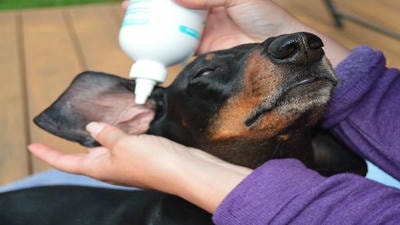
Your pet’s ears are an essential part of their overall health and well-being. Whether your furry friend is a dog, cat, or even a small animal, keeping their ears clean and healthy is crucial for preventing infections, discomfort, and long-term complications. Ear care might seem daunting at first, but with the right knowledge and tools, it can become a simple and routine part of your pet care regimen.
Ears are not just for hearing; they also play a vital role in balance and communication. Pets rely on their ears to navigate their environment, and any issues can lead to discomfort, disorientation, or even behavioral changes.
Ignoring your pet’s ear health can lead to chronic infections, hearing loss, and even permanent damage to the ear canal. Regular ear care helps prevent these issues and ensures your pet stays comfortable and healthy.

The visible part of the ear, the pinna, is designed to capture sound and direct it into the ear canal.
The ear canal is a tube-like structure that connects the outer ear to the eardrum. It is lined with skin and contains glands that produce earwax.
The middle and inner ear are responsible for hearing and balance. These areas are delicate and can be damaged if infections or debris reach them.

To clean your pet’s ears safely and effectively, you’ll need:
Choose a quiet, comfortable space for the cleaning session. Calm your pet by petting them or speaking softly. If your pet is anxious, consider having another person assist you.
Before cleaning, examine your pet’s ears for signs of redness, swelling, or discharge. If you notice anything unusual, consult your veterinarian before proceeding.
Gently lift your pet’s ear and fill the ear canal with the cleaning solution. Be careful not to insert the bottle tip too far into the ear.
Massage the base of the ear for 20-30 seconds to help the solution break down wax and debris. You’ll hear a squishing sound, which is normal.
Use a cotton ball or gauze pad to wipe away the loosened debris from the ear canal. Repeat until the cotton ball comes out clean. Do not insert anything deep into the ear canal, as this can cause damage.
Praise your pet and offer a treat to create a positive association with ear cleaning.

Check your pet’s ears weekly for signs of redness, discharge, or odor. Early detection of issues can prevent them from becoming serious.
Moisture in the ear canal can create a breeding ground for bacteria and yeast. Dry your pet’s ears thoroughly after baths, swimming, or exposure to rain.
For pets with excessive hair in the ear canal, such as Poodles or Schnauzers, regular trimming can improve airflow and reduce the risk of infections.
Keep cleaning products, perfumes, and other irritants away from your pet’s ears. Use only veterinarian-approved ear care products.
Allergies can contribute to ear problems in pets. Work with your vet to identify and manage allergens that may be affecting your pet.
If your pet’s ear issues, such as redness, discharge, or odor, persist despite cleaning, consult your veterinarian.
Pets that are in pain, scratching excessively, or showing signs of distress should be seen by a vet immediately.
If your pet appears disoriented, tilts their head, or shows signs of hearing loss, seek veterinary care promptly.
Dogs, especially those with floppy ears like Cocker Spaniels or Basset Hounds, are more prone to ear infections. Regular cleaning and maintenance are essential.
Cats are generally more resistant to ear infections but can develop issues like ear mites. Routine inspections and cleanings can help keep their ears healthy.
Rabbits, guinea pigs, and other small animals have delicate ears that require gentle care. Use only products specifically designed for small pets.
Fact: Over-cleaning can irritate the ear canal, but regular cleaning with the right products is safe and beneficial.
Fact: Some earwax is normal and helps protect the ear canal. Excessive or abnormal wax may indicate a problem.
Fact: While cats are less prone to ear issues than dogs, they still benefit from occasional ear inspections and cleanings.
Regular ear care reduces the risk of bacterial, yeast, and parasitic infections.
Healthy ears ensure your pet can hear clearly and respond to their environment.
Comfortable, clean ears contribute to your pet’s overall well-being and happiness.
Keeping your pet’s ears clean and healthy is an essential part of responsible pet ownership. By following this step-by-step guide, you can prevent ear problems, detect issues early, and ensure your pet’s ears remain in optimal condition. Remember to use veterinarian-approved products, inspect your pet’s ears regularly, and seek professional care if you notice any signs of discomfort or infection. With proper ear care, your pet will enjoy a happier, healthier life by your side.